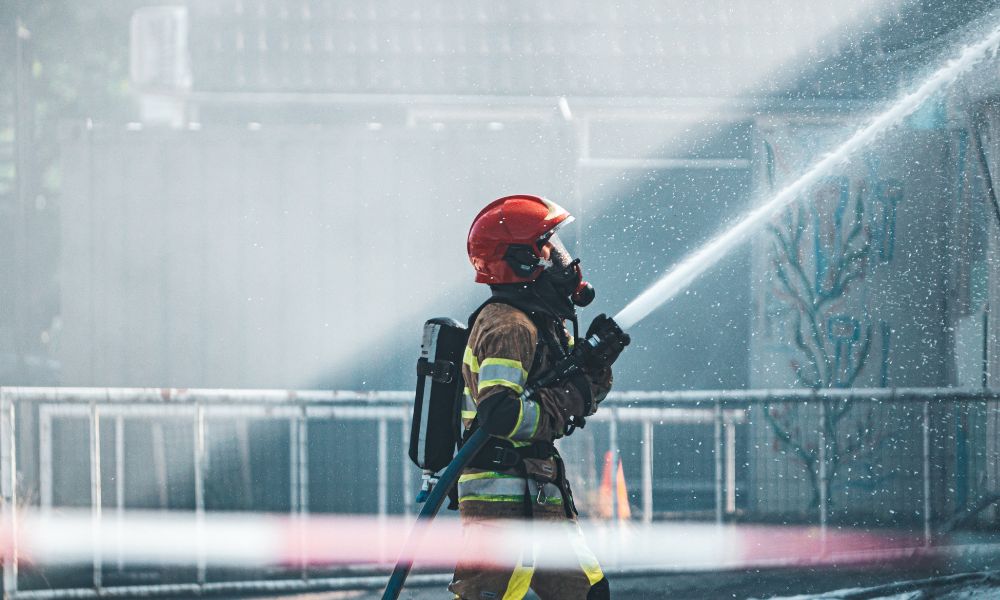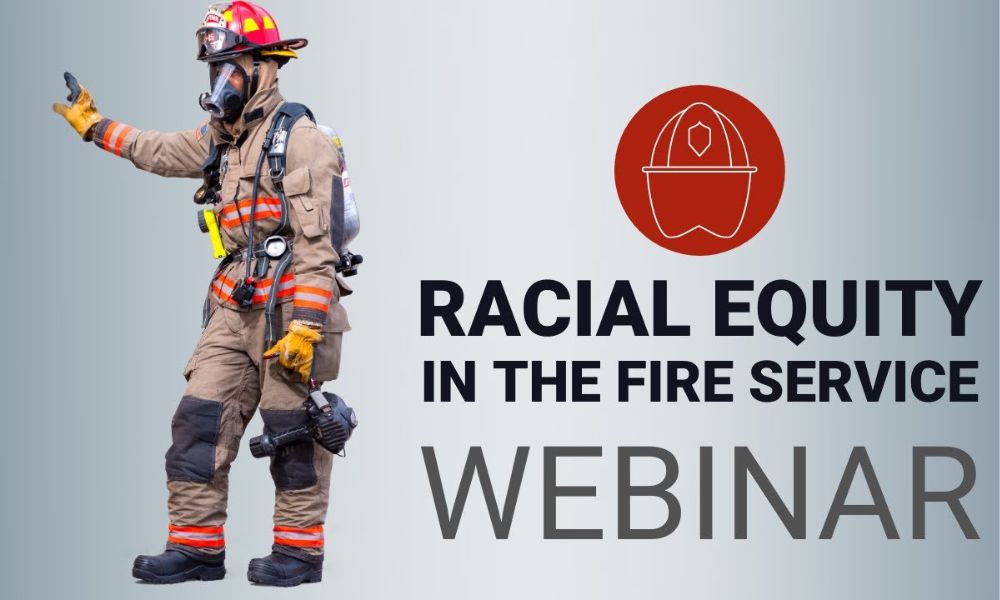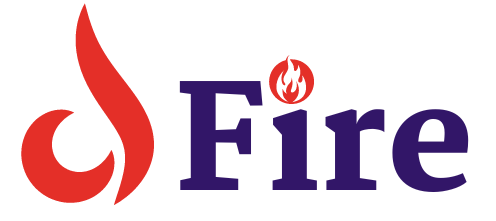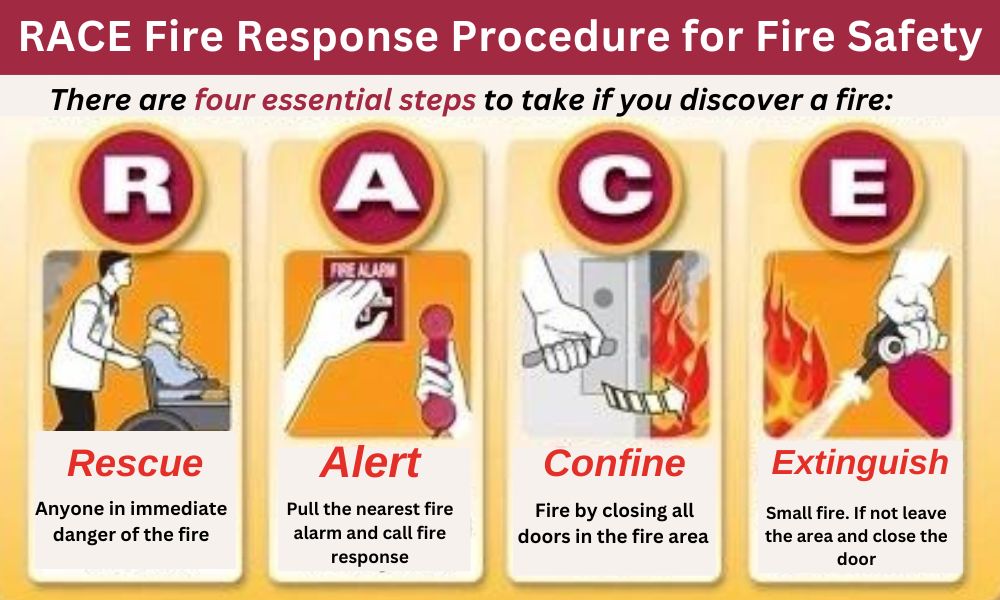The issue of diversity and inclusion RACE in fire and safety industry has been a topic of discussion for many years. The lack of representation among certain racial and ethnic groups has been a cause for concern, particularly when it comes to the recruitment and retention of firefighters and other safety professionals. Despite efforts to address this issue, progress has been slow.
One factor contributing to the need for more diversity in the fire and safety industry is the historical underrepresentation of specific communities. For example, African Americans and Hispanic Americans have traditionally been underrepresented in these fields, which has made it difficult for them to gain access to the education and training necessary to pursue careers in fire and safety.
Additionally, there are still many barriers that prevent people from these communities from entering the industry, such as discrimination and bias in the hiring process.
Despite these challenges, there has been a growing recognition of the importance of diversity and inclusion in the fire and safety industry. Many organizations and agencies are working to promote greater diversity and inclusion in terms of recruitment and retention.
These efforts include outreach programs to underserved communities, mentoring and training programs for aspiring firefighters and safety professionals, and initiatives to address bias and discrimination in the workplace.
RACE Full Form in Fire Safety
In the context of fire safety, “RACE” typically stands for:
R – Rescue: This involves assessing the situation and determining if it’s safe to attempt rescues, either assisting individuals to evacuate or calling for professional rescue services if necessary.
A – Alert: Once it’s determined that a fire or emergency exists, alerting others in the vicinity by activating fire alarms, shouting warnings, or using other means to ensure everyone is aware of the danger.
C – Confine: Attempting to contain the fire by closing doors or windows, using fire extinguishers if it’s safe to do so, or other methods to prevent the fire from spreading further.
E – Extinguish / Evacuate: If the fire cannot be safely controlled or extinguished, initiating evacuation procedures and ensuring that everyone exits the building or area to a safe location.
RACE is a mnemonic device commonly used in fire safety training to help individuals remember the essential steps to take in the event of a fire or emergency.
RACE Fire Response Procedure for Fire Safety
The RACE fire response procedure is a systematic approach to handling fire emergencies in a building or facility. The acronym RACE stands for Rescue, Alert, Confine, and Evacuate. Here’s a detailed breakdown of each step:
Rescue:
- Assess the situation and determine if it’s safe to attempt rescues.
- If it is safe, assist individuals who are in immediate danger to safety.
- Help them evacuate the area or building using designated escape routes.
- If necessary, call for professional rescue services to assist with evacuations.
Alert:
- Once it’s confirmed that there is a fire emergency, alert others in the vicinity.
- Activate the fire alarm system to notify occupants of the building.
- Shout warnings to inform people about the fire and the need to evacuate.
- Use any available means to ensure that everyone is aware of the danger.
Confine:
- Take actions to confine the fire and prevent its spread.
- Close doors or windows to contain the fire within a specific area.
- Use fire extinguishers if it’s safe to do so to suppress small fires.
- Implement other measures to limit the fire’s expansion and reduce potential damage.
Extinguish / Evacuate:
- If the fire cannot be safely controlled or extinguished, initiate evacuation procedures.
- Follow established evacuation routes and exit the building calmly and quickly.
- Assist others, especially those who may need help, such as individuals with disabilities or injuries.
- Assemble at designated assembly points outside the building to ensure accountability and safety.
It’s essential to train all occupants of the building on the RACE fire response procedure regularly. Conducting fire drills and providing clear instructions on evacuation routes and procedures can help ensure a swift and coordinated response in the event of a fire emergency.
Additionally, designate individuals or teams responsible for specific tasks during a fire emergency, such as operating fire extinguishers or assisting with evacuations, to ensure an organized and effective response.
Historical Context of RACE in Fire and Safety
Early Firefighting and Racial Segregation
The history of firefighting in the United States is deeply intertwined with issues of RACE and segregation. In the early days of firefighting, volunteer fire departments were often organized along ethnic and racial lines. This resulted in segregated firehouses and unequal access to firefighting equipment and training.
During the Jim Crow era, many fire departments in the South were wholly segregated, with separate firehouses and equipment for white and black firefighters. Black firefighters were often relegated to the most dangerous and least desirable assignments and were frequently denied promotions and other opportunities for advancement.
Civil Rights Movement and Fire Department Integration
The Civil Rights Movement of the 1960s significantly impacted the integration of fire departments across the country. As a result of legal challenges and protests, many fire departments were forced to abandon their discriminatory practices and begin to integrate.
Today, many fire departments have made significant progress in promoting diversity and inclusivity in their ranks.
However, there is still much work to be done to address the legacy of racial discrimination in the fire service and to ensure that all firefighters have equal access to training, equipment, and opportunities for advancement.
Current Racial Demographics in Fire and Safety
Fire and safety departments across the United States have historically been predominantly white, with little representation from minority groups. However, in recent years, there have been efforts to increase diversity in these departments.
Representation of Minorities in Fire Departments

According to the National Fire Protection Association (NFPA), as of 2019, approximately 82% of firefighters in the United States were white, while African Americans accounted for 7.5%, Hispanics 7.3%, and Asians 1.3%. Native Americans and other groups made up the remaining 1.9%.
These numbers show a slight increase in diversity compared to previous years, but there is still a significant underrepresentation of minority groups in fire departments. This lack of diversity can adversely affect the department’s ability to serve diverse communities effectively.
Diversity Initiatives and Recruitment
Many fire departments have implemented diversity initiatives to increase the representation of minority groups. These initiatives include recruitment programs targeted at minority communities, partnerships with local organizations, and outreach efforts to schools and colleges.
Additionally, some departments have implemented policies to address biases and discrimination within the department. These policies aim to create a more inclusive and welcoming environment for all firefighters, regardless of RACE or ethnicity.
Despite these efforts, there is still a long way to go to achieve true diversity in fire and safety departments. Continued efforts and initiatives are necessary to ensure these departments accurately reflect their communities.
Impact of Racial Diversity on Fire and Safety Services
Community Relations and Trust Building
Racial diversity within fire and safety services can significantly impact community relations and trust building. A diverse workforce can help bridge cultural gaps and build trust with communities that may have historically had negative experiences with emergency responders.
By having a workforce representative of the community it serves, fire and safety services can better understand the needs and concerns of the community. This can lead to more effective communication and collaboration during emergencies and more proactive efforts to prevent emergencies from occurring in the first place.
Cultural Competence in Emergency Response
Cultural competence is essential for emergency responders, as it allows them to effectively communicate with and provide services to individuals from diverse backgrounds. A lack of cultural competence can lead to misunderstandings, mistrust, and even dangerous situations.
Racial diversity within fire and safety services can promote cultural competence by providing opportunities for cross-cultural training and education. This can help emergency responders better understand the cultural norms, values, and beliefs of the communities they serve and tailor their response accordingly.
Overall, racial diversity within fire and safety services can positively impact community relations, trust building, and cultural competence. By promoting diversity within their workforce, fire, and safety services can better serve the needs of their communities and ensure that all individuals receive the same level of care and protection during emergencies.
Challenges and Barriers to Racial Inclusion
Institutional Racism and Discrimination
Institutional racism and discrimination have been a significant barrier to racial inclusion in fire and safety. The lack of diversity in leadership positions and the absence of policies that promote inclusivity have contributed to the underrepresentation of racial minorities in the field.
Studies have shown that unconscious bias and stereotyping are prevalent in the recruitment and selection process, which has resulted in the exclusion of qualified candidates from underrepresented groups. Additionally, racial minorities face challenges in accessing training and development opportunities, which limits their career progression.
Economic and Social Obstacles
Economic and social obstacles also challenge racial inclusion in fire and safety. Financial barriers, such as the cost of training and certification, can be a significant obstacle for individuals from low-income backgrounds.
Furthermore, the lack of diversity in the communities served by fire departments can create social barriers for racial minorities. This can lead to mistrust and a lack of engagement with the fire and safety services, which can further perpetuate the underrepresentation of racial minorities in the field.
To address these challenges and barriers, it is essential to implement policies and practices that promote diversity, equity, and inclusion in the fire and safety field. This includes increasing the representation of racial minorities in leadership positions, providing equal access to training and development opportunities, and creating a more inclusive and welcoming environment for all individuals.
Strategies for Promoting Racial Equity in Fire and Safety

Fire and safety departments across the United States have been criticized for lacking diversity and inclusion. Several strategies can be implemented to promote racial equity in fire and safety.
Policy Reforms and Legislative Actions
One strategy is implementing policy reforms and legislative actions addressing racial disparities in fire and safety.
This can include diversifying hiring practices, increasing funding for fire and safety departments in underserved communities, and implementing anti-discrimination policies. By taking these actions, fire and safety departments can work towards creating a more equitable and inclusive environment.
Education and Training Programs
Another strategy is implementing education and training programs focusing on racial equity in fire and safety. This can include training on implicit bias, cultural competency, diversity, and inclusion. By providing education and training, fire and safety departments can ensure their personnel have the knowledge and skills to serve diverse communities.
Community Outreach and Engagement
Finally, community outreach and engagement are critical for promoting racial equity in fire and safety. This can include initiatives such as community forums, outreach events, and partnerships with community-based organizations. By engaging with the community, fire and safety departments can build trust and foster relationships that promote equity and inclusion.
Overall, promoting racial equity in fire and safety requires a multi-faceted approach that involves policy reforms, education and training, and community outreach and engagement. By implementing these strategies, fire and safety departments can work towards creating a more equitable and inclusive environment for all.
Frequently Asked Questions: RACE in Fire and Safety
What does the RACE acronym stand for in fire safety procedures?
RACE is an acronym for remembering the steps involved in fire safety procedures. It stands for Rescue, Alarm, Contain, and Extinguish.
How does the PASS technique assist in adequately using a fire extinguisher?
PASS is an acronym that stands for Pull, Aim, Squeeze, and Sweep. It is used to assist in the proper use of a fire extinguisher. The technique involves:
- Pulling the pin out of the extinguisher.
- Aiming the nozzle at the base of the fire.
- Squeezing the handle to release the extinguishing agent.
- Sweeping the nozzle from side to side to cover the entire fire area.
What are the steps involved in the RACE procedure during a fire emergency?
The RACE procedure involves four steps: Rescue anyone in immediate danger, Activate the alarm to alert others, Contain the fire by closing doors and windows, and Extinguish the fire if possible or evacuate the area.
How does OSHA define the RACE protocol for fire safety and emergency response?
OSHA defines the RACE protocol as a set of procedures designed to ensure the safety of employees during a fire emergency. The protocol involves rescue, alarm, containment, and extinguishment.
What are the critical components of the SAFE acronym in the context of fire safety?
SAFE is an acronym used to remember the critical components of fire safety. It stands for Sound the alarm, Alert others, Find a way out, and Evacuate the building.
In what ways does the PASS acronym contribute to effective fire response and equipment handling?
The PASS acronym contributes to effective fire response and equipment handling by providing a simple and easy-to-remember technique for using a fire extinguisher. It helps ensure the extinguisher is used correctly and effectively to extinguish the fire.

I’m Abdus Sobur, a highly skilled and professional Fire Safety Officer with a passion for safeguarding lives and property. Over the course of my career, I’ve conducted numerous successful fire safety audits, earning a reputation for excellence in ensuring public safety.
In addition to my role as a Fire Safety Officer, I’m also dedicated to raising awareness about the importance of fire safety. Through my blog, I share insights into the functions of different fire safety equipment, aiming to empower individuals with the knowledge they need to protect themselves and their communities.
I’m driven by a deep commitment to promoting fire safety awareness and preventing fire-related incidents.

